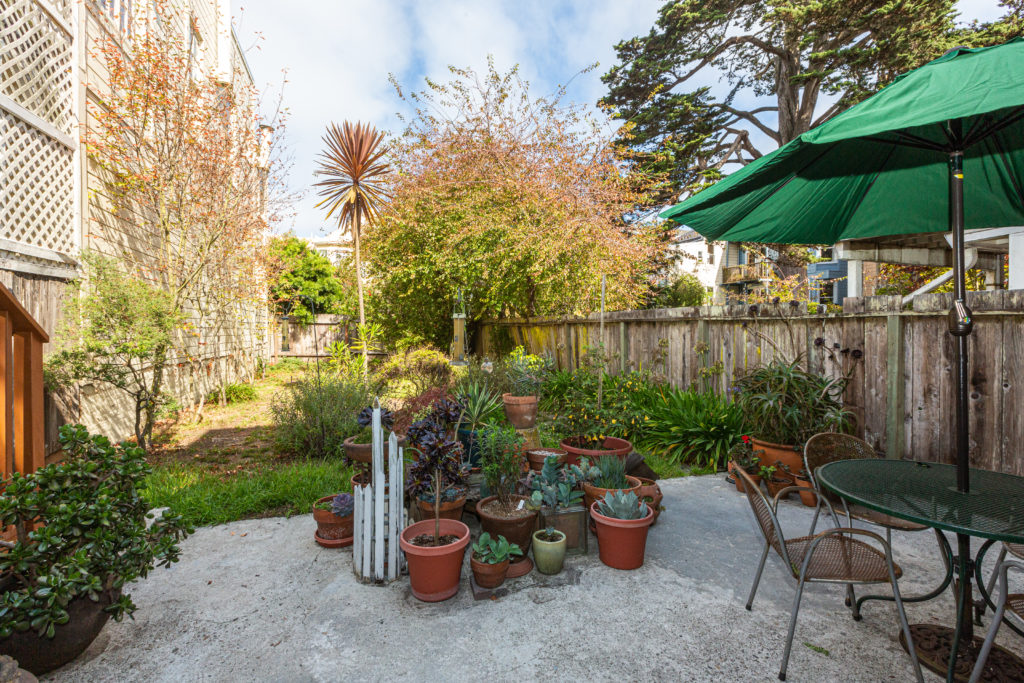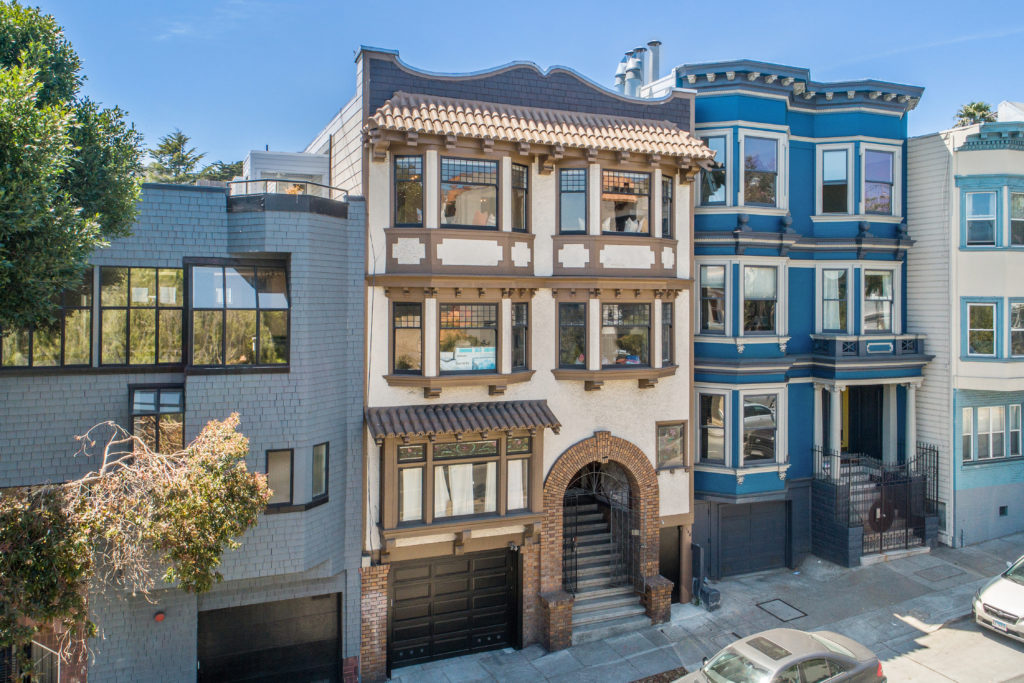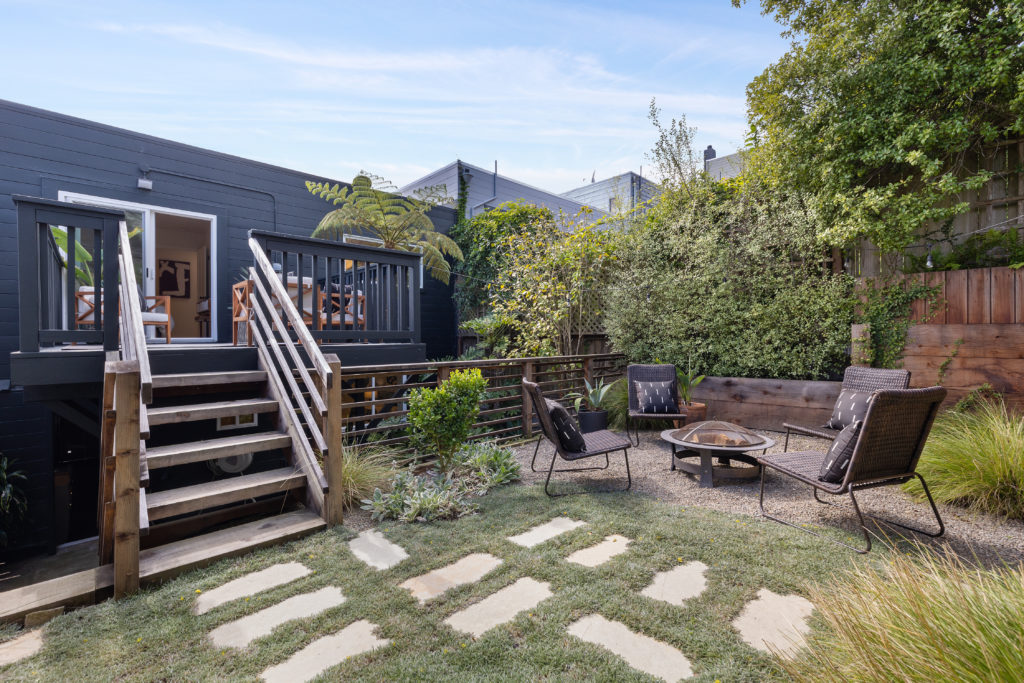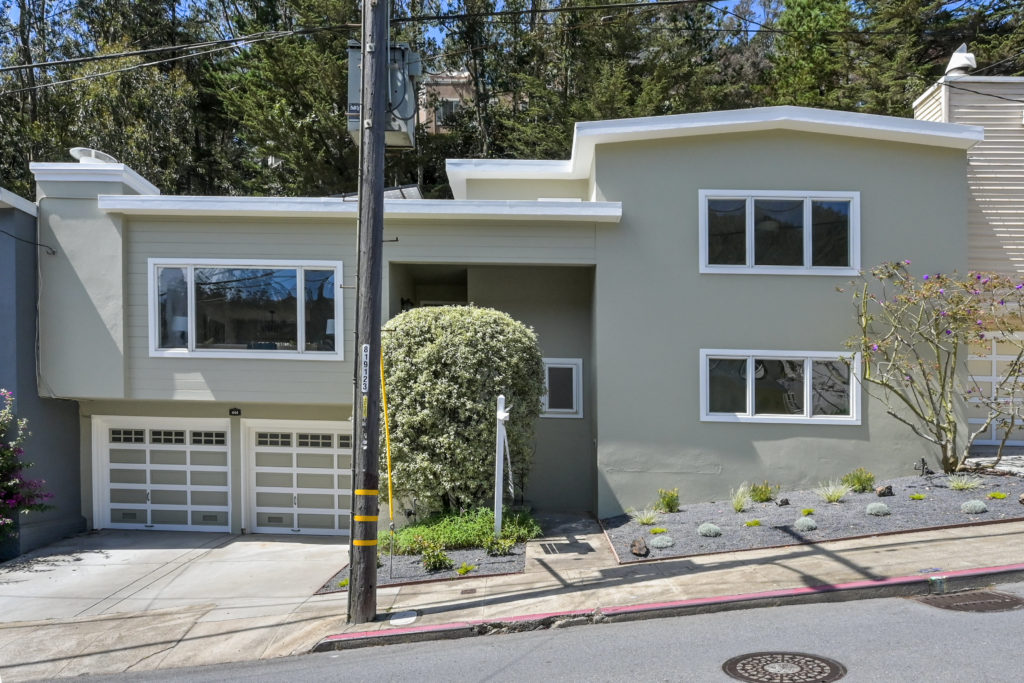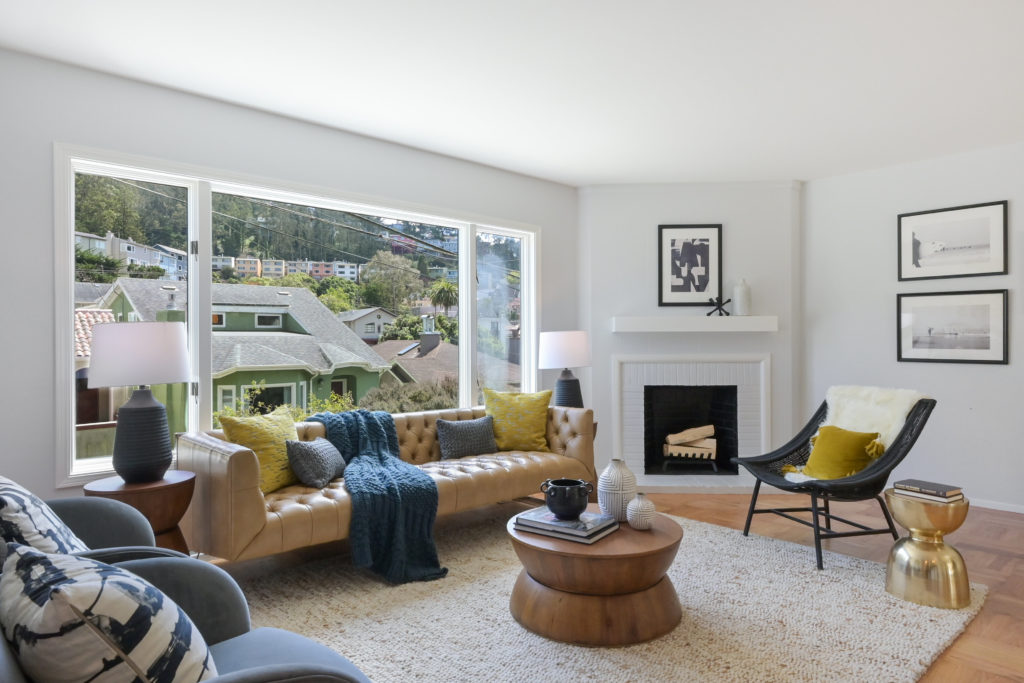Four Quintessentially
San Francisco Homes For Sale
by INHABIT EDITORS
Leave your heart in these four charming residences for sale in the city by the bay.
San Francisco is one of the world’s most cinematic cities, with its architecture having a starring role in Vertigo, Dirty Harry, Mrs. Doubtfire, and the opening credits of Full House. Its distinct look is a result of its environment: Due to earthquake concerns and an abundance of local timber, the majority of residences were historically built of wood rather than masonry, much of it cut from the towering old-growth forests of Mendocino and Humboldt counties, as well as the Santa Cruz Mountains.
Though the elaborate Victorian and Edwardian Queen Anne houses are the city’s most well-known style, the more modest Marina-style houses — built by local developers like Henry Doelger — are just as quintessentially San Francisco.
Here are four homes for sale in San Francisco that span the centuries, with a mix of condos, multi-family, and single-family residences.
The Italianate
Built: 1906
San Francisco underwent the first of its many booms during Queen Victoria’s reign from 1837 to 1901. Newly wealthy San Franciscans — with fortunes acquired from the 1849 Gold Rush and the 1859 discovery of the Comstock Lode — were eager to commission grand houses in the most fashionable styles of the day, resulting in the plethora of the city’s signature Victorians. Though the houses are often simply referred to “Victorians,” San Francisco’s houses from this era can generally be subdivided into three periods: Stick-Eastlake, Queen Anne, and Italianate.
Hallmarks of Italianate houses included narrow windows, oversized brackets at the eaves, and elaborate hooded entrances, also bolstered by ornate bracketing. In San Francisco, Italianate row houses were decorated with ornamentation carved from redwood rather than the traditional stone, which was more readily available on the West Coast. As lot sizes shrank and the Italianate style became more popular, builders started incorporating bay windows to increase interior square footage and to bring more light inside.
With a recorded built date of 1906 — the year of the great earthquake — 136 Beulah was likely constructed during the city’s great rebuilding, and its simpler facade reflects the city’s architectural transition to the Edwardian era. In its current, fourplex configuration, it has two one-bedroom apartments, one two-bedroom, and one three-bedroom. Two units have decks, and there’s a yard shared by all, as well as a single-bay garage with storage. It’s all just a short distance from Golden Gate Park, including the popular Koret Children’s Playground with its historic carousel and beloved 30-foot concrete slides. Haight and Cole Street shopping, as well as UCSF, USF, and St. Mary’s Hospital, are also nearby.
Represented By: David Antman of Corcoran Icon Properties.
The Edwardian Mission Revival
Year Built: 1914
Edwardian architecture technically refers to a period rather than a certain style, specifically structures built from 1901 to 1918 during (and slightly beyond) the reign of King Edward VII. However, Edwardian is often used as a catch-all term to describe many historic homes in San Francisco, particularly as Edwardian houses are more common in the city than Victorians, as many of those that weren’t destroyed by the 1906 earthquake burned in the fires that followed.
Less ornate than Victorians, San Francisco’s Edwardians often were built as a mashup of different styles, and this three-unit building is a perfect case study. It’s primarily built in a Mission Revival style, with its distinct curved parapet, terra-cotta tile visor roofs, stucco exterior, and arched doorway, but its embellished bay windows nod to Italianate practice.
This top-floor two-bedroom, two-bathroom condo at 150 Mission is a charming mix of period details and modern conveniences. With windows on all four sides and skylights above, the interior is brightly lit by natural light, plus three of the bay windows boast long, built-in window seats, perfect for watching city life unfold outside. Both bathrooms are completely remodeled, with plenty of storage. The apartment also has a laundry room with a large in-unit washer and dryer and stairs to the shared backyard.
Represented By: Peter Goss and Kuntala Cheng of Corcoran Icon Properties.
The Mid-Mod Marina Style
Year Built: 1956
From the 1920s through the 1960s, San Francisco became awash in a style of unpretentious houses that generally featured two bedrooms and one bathroom over a garage, with a door set to one side. For San Franciscans, these houses are as emblematic of the city’s look as the more famous Victorians, yet they’re rarely heralded equally.
Some architectural historians call these Marina-style houses, as they first began proliferating in the city when developers looked to build many easily replicable single-family homes on the site of the 1915 Panama-Pacific Exposition, which eventually became the Marina District. Others call them “Doelger-style” after Henry Doelger, the immensely prolific developer who built thousands of these houses in the Sunset and Daly City from the 1920s through the 1960s. Doelger proved an inspiration to many copycat developers all around San Francisco, including Gilbert Plov in Sunnyside and the Rousseau Brothers in the Sunset.
216 Mangels is a midcentury modern take on a classic Marina with a few extra details that delightfully elevate the style. The houses of Sunnyside — one of San Francisco’s more under-the-radar neighborhoods — are set amid rolling hills, and almost all of them boast terraced multi-level gardens. This backyard is particularly charming, with multiple levels for outdoor seating and a lush mix of drought-resistant plantings. There are also two skylights: one illuminates the foyer and stairwell and the other lights up the bathroom on the main floor. Typically, Marina-style houses left the ground level unfinished to allow for customization, and here, the owners have created a third king-sized bedroom (in addition to the two upstairs) with its own bathroom to complete the garage level.
Represented By: Peter Goss and Kuntala Cheng of Corcoran Icon Properties.
The Split-Level Marina Style
Year Built: 1957
Though most Marina-style houses built by Henry Doelger and his contemporaries were “junior fives” — a living room, bathroom, kitchen with a dining area (a “full five” had a separate dining room), and two bedrooms, with a one car-garage below — you’ll occasionally find enlarged versions of these houses throughout the city. Though the former generally had similar interior layouts, each developer would vary the exteriors slightly to fit the taste of the time, with many mid-century exteriors bringing a bit of a futuristic flair to offset the unadorned flat fronts that were influenced by the Streamline Moderne movement. Starting in the 1940s, these houses also tended to feature “tunnel” entrances instead of exterior stairs.
Larger than a junior five, this extra-wide Marina-style house — note the unusual two-car side-by-side garage, which has a new EV charging station — sports two bedrooms on the upper level of the split level and has the added bonus of two bathrooms instead of just one, as well as a separate dining room. Downstairs, there’s a fully legal bedroom or rec room with a full bathroom that’s ideal for visiting friends, family, or an au pair. Outside, there’s a deck and a landscaped garden with a hillside backdrop. The house is a short stroll to the MUNI hub and restaurants of West Portal, including local fave Submarine Center.
Represented By: Melinda Lee of Corcoran Icon Properties.


